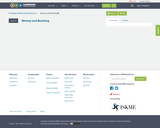
- Subject:
- Economics
- Social Science
- Material Type:
- Unit of Study
- Provider:
- Rice University
- Provider Set:
- OpenStax College

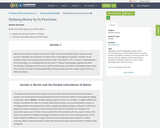
By the end of this section, you will be able to:
Explain the various functions of money
Contrast commodity money and fiat money


By the end of this section, you will be able to:
Use the aggregate demand/aggregate supply model to show periods of economic growth and recession
Explain how unemployment and inflation impact the aggregate demand/aggregate supply model
Evaluate the importance of the aggregate demand/aggregate supply model

In this chapter, you will learn about:
Macroeconomic Perspectives on Demand and Supply
Building a Model of Aggregate Demand and Aggregate Supply
Shifts in Aggregate Supply
Shifts in Aggregate Demand
How the AD/AS Model Incorporates Growth, Unemployment, and Inflation
Keynes’ Law and Say’s Law in the AD/AS Model
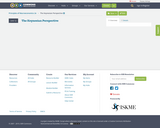
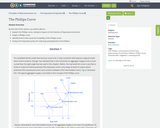
By the end of this section, you will be able to:
Explain the Phillips curve, noting its impact on the theories of Keynesian economics
Graph a Phillips curve
Identify factors that cause the instability of the Phillips curve
Analyze the Keynesian policy for reducing unemployment and inflation

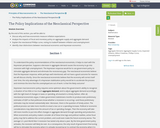
By the end of this section, you will be able to:
Discuss why and how economists measure inflation expectations
Analyze the impacts of fiscal and monetary policy on aggregate supply and aggregate demand
Explain the neoclassical Phillips curve, noting its tradeoff between inflation and unemployment
Identify clear distinctions between neoclassical economics and Keynesian economics

With this free video resource, students will explore the economic way of thinking, and the role incentives play in all our lives through engaging Hollywood production style videos.
Educators can use MRU's videos in a variety of ways, to include “flipping” the classroom, as study aids, supplementary material, concept reinforcement, or even as a full course offering.
In MRU's Principles of Macroeconomics course, we’ll cover fundamental questions such as: Why do some countries grow rich while others remain poor? How important is a country’s banking system — and what happened during the recent financial crisis? How did Zimbabwe end up with an inflation rate that rose into the quadrillions?
We’ll also cover important topics like the Federal Reserve, monetary policy, fiscal policy, the Solow Growth Model, institutional analysis, the “economics of ideas,” and more.
------------------------------------
What is Marginal Revolution University (MRU)?
Many of us can remember our first great economics teacher who fundamentally changed how we see the world. At MRU, we try and deliver that experience to millions worldwide through video.
Founded as a nonprofit in 2012 by George Mason University economics professors Tyler Cowen and Alex Tabarrok, MRU is building the world’s largest online library of free economics education videos -- currently weighing in at more than 800 videos.
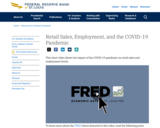
This short video shows the impact of the COVID-19 pandemic on retail sales and employment levels.
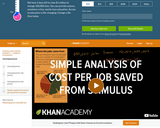
Simple analysis of cost per job saved from stimulus. Created by Sal Khan.
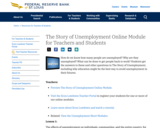
How do we know how many people are unemployed? Why are they unemployed? What can be done to get people back to work? Students get the answers to these and other questions in The Story of Unemployment, including why education might be the best way to avoid unemployment in their futures.
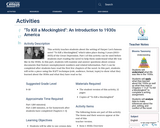
This activity teaches students about the setting of Harper Lee’s famous novel “To Kill a Mockingbird,” which takes place during 3 years (1933–1935) of the Great Depression. Part 1 of this activity can be used before students start reading the novel to help them understand what life was like in the 1930s. In this part, students will examine and answer questions about census documents that feature unemployment numbers and related information. Part 2 can be completed after students have read the first few chapters of the novel. In this part, students will write a piece using the RAFT technique (role, audience, format, topic) to show what they learned about the 1930s and what they have read so far.

Analyzing unemployment data to show that "real" unemployment is worse than the headline numbers show. Created by Sal Khan.
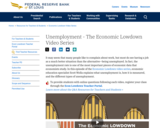
In this video (7 minutes long) student will learn what unemployment is, how it is measured and the different types of employment that exist. This video will help with mastery of standard EPF. 5(b) and review of standards EPF. 2(g).
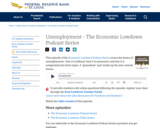
The fifth episode covers the basics of unemployment—how it is defined, how it is measured, and how it is categorized into three types. A "gameshow" quiz winds up the nine-minute lesson.